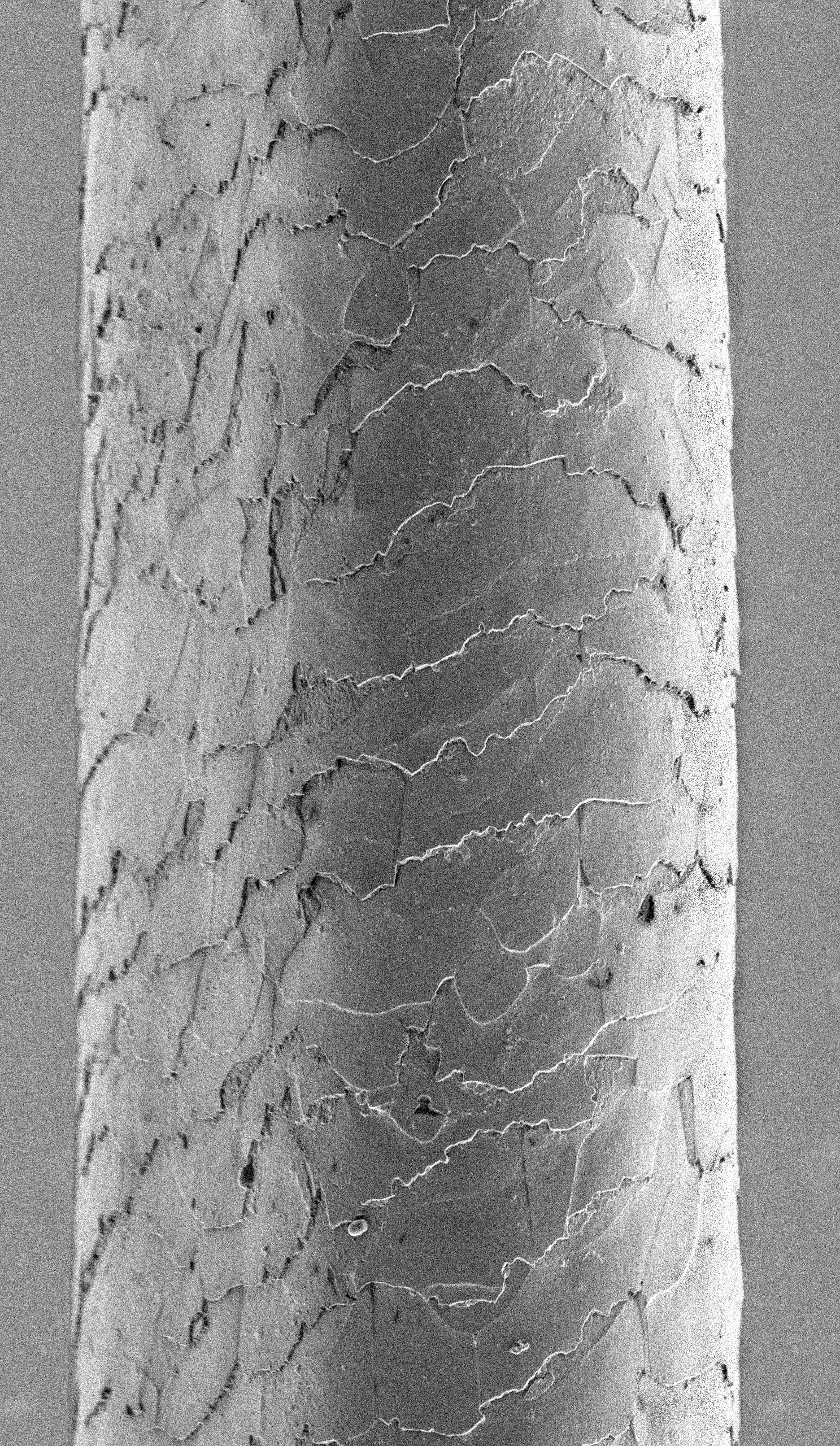Toward better blades

How can mere human hair defeat razors so quickly when the blade is 50 times harder than the hair? MIT researchers are on the case.
Associate professor of metallurgy C. Cem Tasan and colleagues found that shaving does not simply wear down the blade over time: a single strand can cause the edge to chip under specific conditions, which then leaves the blade vulnerable to further chipping. As more chips accumulate, the edge can quickly dull, especially if the microscopic structure of the steel is not uniform. The angle at which the blade approaches the hair and the presence of defects in the steel’s heterogeneous microstructure also play a role.
Key to the findings were a series of experiments by graduate student Gianluca Roscioli, who used a scanning electron microscope to examine razor blades after shaving his face and then built an apparatus to carry out cutting tests on his own and his lab mates’ hair inside the microscope. The team also did computational simulations of a blade slicing through a strand to predict the conditions under which the blade would be likely to chip.
The researchers have filed a provisional patent on a process to manipulate steel into a more homogenous form that could yield longer-lasting, more chip-resistant blades. Says Roscioli, “We’ve learned how to make better blade materials, and now we want to do it.”
Keep Reading
Most Popular
Large language models can do jaw-dropping things. But nobody knows exactly why.
And that's a problem. Figuring it out is one of the biggest scientific puzzles of our time and a crucial step towards controlling more powerful future models.
The problem with plug-in hybrids? Their drivers.
Plug-in hybrids are often sold as a transition to EVs, but new data from Europe shows we’re still underestimating the emissions they produce.
Google DeepMind’s new generative model makes Super Mario–like games from scratch
Genie learns how to control games by watching hours and hours of video. It could help train next-gen robots too.
How scientists traced a mysterious covid case back to six toilets
When wastewater surveillance turns into a hunt for a single infected individual, the ethics get tricky.
Stay connected
Get the latest updates from
MIT Technology Review
Discover special offers, top stories, upcoming events, and more.